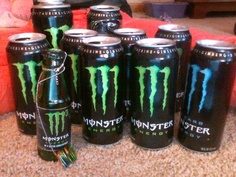Teens are abusing a ‘hot’ new drug in enormous quantities and it’s as easy to purchase as a click of a button.’ This morbid idea is unfortunately a reality. Caffeine powder is leading the charge as an easy and incredibly dangerous way for teens to get a buzz. Offering over 70x the concentration of many energy drinks and just as easy to obtain, caffeine powder poses a massive threat to youths.
Not only are teens binging on caffeine powder, but they are also dying because of it. With news stories popping up at an alarming rate, this new drug of choice cannot be taken lightly. The problem is that the majority of young people don’t see the harm in caffeine; they see ads for an energy drink on television and walk past Starbucks on the way to school. Caffeine is in their daily consciousness.
What they are tragically finding out too late is that caffeine powder can create a life-ending buzz.
What Is Caffeine Powder?
In the simplest terms, caffeine powder is a super concentrated method of ingesting caffeine. The amount of caffeine in a single teaspoon of powder is equivalent to around 25 cups of coffee, and not only is it incredibly potent and dangerous but it’s also alarmingly inexpensive. For just $10 you can order 250,000 milligrams of caffeine powder, making it one of the cheapest ways for teens to get buzzed.
With how readily available and overwhelmingly strong caffeine powder is these days, it’s no surprise that there have been so many cases of overdosing. One tragic example is the story of Logan Stiner, an 18 year old Ohio resident who overdosed on caffeine powder just days before his high school graduation. Ultimately dying from a cardiac arrhythmia and a seizure due to caffeine toxicity, Stiner’s blood caffeine level was 20 times higher than an everyday coffee drinker.
The problem lies in the sheer lack of education surrounding caffeine powder as well as marketing it as a dietary supplement. You can walk into a vitamin store and purchase a tub of caffeine powder next to a six pack of diet protein shakes. Stiner, a star wrestler, may have been under the impression that taking caffeine powder as a supplement would produce only positive results.
Unfortunately Stiner is not the only one who was not aware of the devastating effects of caffeine powder. Another story from 2010 outlined a similarly tragic tale: Michael Bedford, a 23 year old partygoer, took two spoonfuls of caffeine powder before washing it down with a can of Red Bull. Bedford very quickly collapsed and was pronounced dead shortly after. In addition to the morose tales of Stiner and Bedford, there have been more than 20 caffeine-related deaths in the last 15 years.
What Other Ways Are Teens Abusing Caffeine?
There are some immediately obvious reasons as to why teens are abusing caffeine to the point of no return: it’s cheap, available and seems harmless. In addition to caffeine powder, teens are also doubling down on energy drinks to get a rush. With so much publicity regarding the dangerous side effects of energy drinks to teens, why are energy drinks as popular as ever?
For years, young and impressionable minds have been swayed by Red Bull’s promise that drinking one of their radioactive drinks will “give you wings!” Whimsical cartoons appealed directly to children and showed the fun and exciting things one could do while on Red Bull. Any teenager can purchase one of these sugary sweet yet potent beverages without a parent or guardian, to the detriment of the health of many teenagers.
The other way that teenagers and youths are mainlining caffeine is even more ubiquitous than energy drinks: coffee. Many students rely on coffee for late night studying and early morning classes, but what many people don’t know are the side effects of coffee on teenagers: anything above 400 to 600 mg is excessive and may cause physical problems, like stomach upsets, agitation, increased heart rate, anxiety, muscular tremors and insomnia. This is all the more troubling as a single Venti brewed coffee at Starbucks contains around 415mg of caffeine.
Is There a Solution?
When it comes to the new trend of caffeine powder, many adults are now seeing the irreparable damage that comes with teens indulging. In response to Logan Stiner’s death, various foundations have been formed that focus on educating the public about the dangers of caffeine powder. In addition, Stiner’s parents have filed a lawsuit against Amazon as well as the manufacturers of the powder that he overdosed on.
Highlighting the fact that there are very minimal warnings and directions on said bags of powder, Stiner’s parents aim to protect future teens who may meet the same fate as him. The FDA has also finally taken notice of the dangers of caffeine powder and have issued notices for retail sales to be banned and/or heavily regulated. While the overall process may be slower moving than one would desire, steps are being made for caffeine powder to meet its demise.
On the other end of the caffeine spectrum, the public is also growing skeptical and wary of energy drinks. In 2014, Red Bull was saddled with a multi-million dollar lawsuit over their manipulative ad campaign. This, hopefully, shows that the masses are beginning to wise up to the contrived promises of energy drinks.





